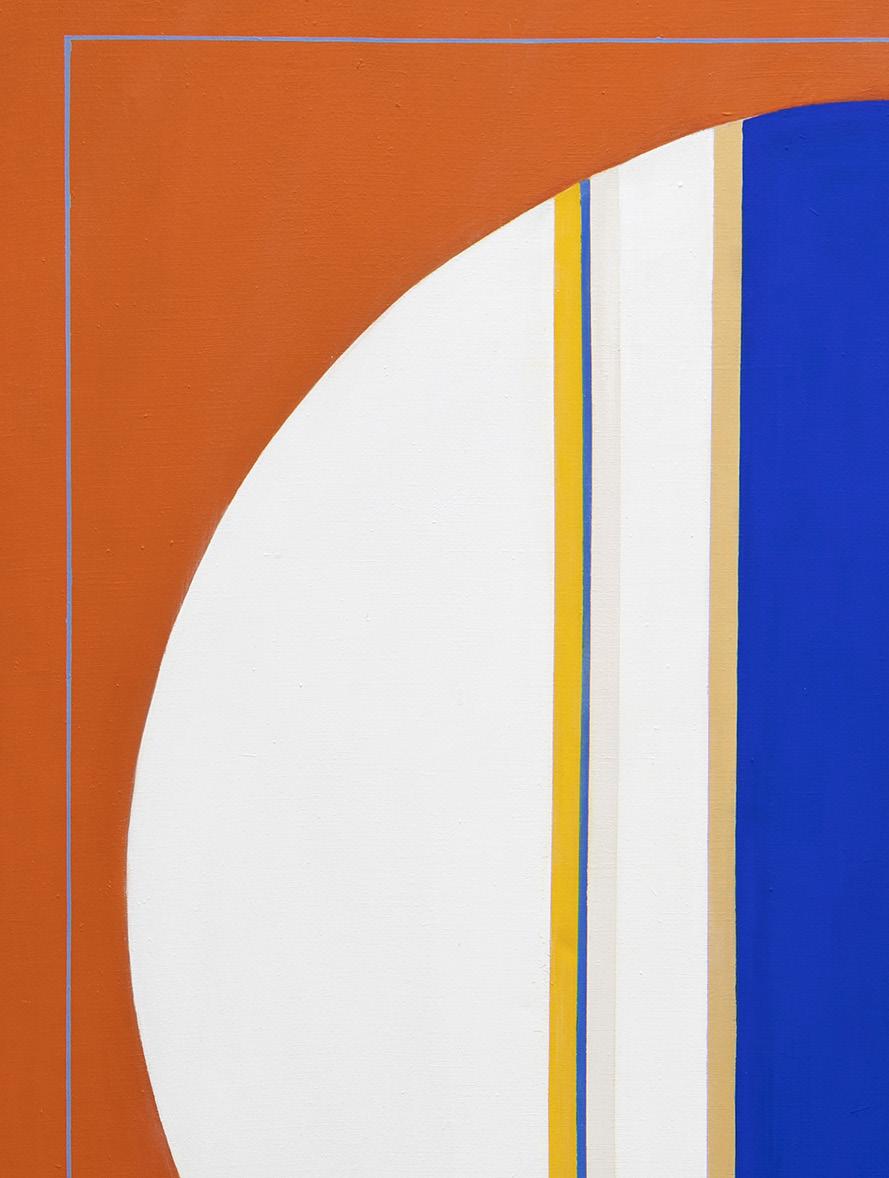
11 minute read
Sydney Ball: 1963-1973 Interpreting colour
By Wendy Walker
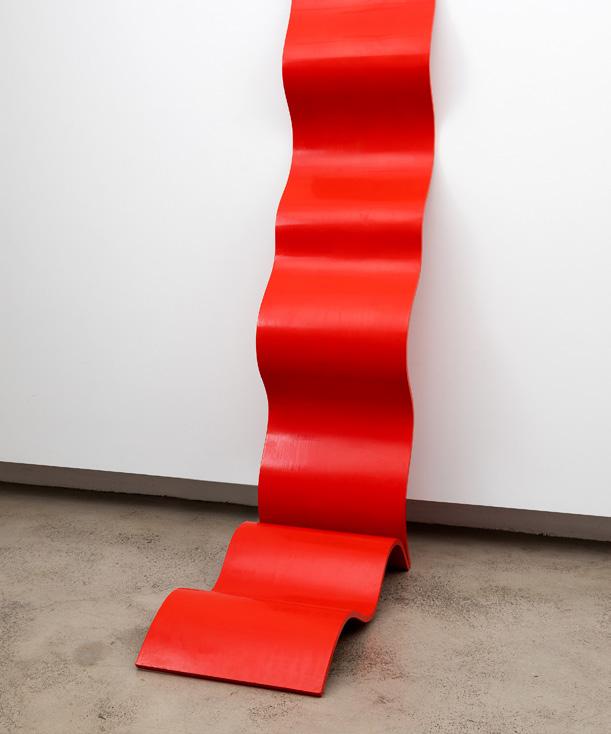
Sydney Ball, Khamsa, 1967, enamel on laminated plywood, 2 parts: 270 x 61 cm; 120 x 61 cm
Sydney Ball: 1963-1973 Interpreting colour
Sydney Ball: 1963-1973 Works from the estate presents paintings, drawings and a laminated plywood sculpture that are indicative of Ball’s six consecutive series of powerful and stylistically diverse colour abstraction, fuelled by two formative periods living in New York at the epicentre of the post-World War II art world. In the early 1960s, while studying painting and lithography at the renowned Art Students League, Ball immersed himself in the exhibitions of first and second-generation American abstractionists – memorably Hans Hofmann, Morris Louis, Kenneth Noland and Mark Rothko. ‘… [T]he whole scene was one of complete energy – it was all there, all happening on the spot – not only painting, but writing, theatre, dance, music – sets by Rauschenberg, music by John Cage.’ 1 Central to this period is the charismatic figure of abstract expressionist artist Theodoros Stamos – lecturer, friend and mentor – who introduced Ball to artists of the New York School such as Willem de Kooning, Lee Krasner, Robert Motherwell and Rothko. (A member of the Irascible Eighteen, Stamos had earlier taught at the experimental, inter-disciplinary Black Mountain College.) 2
One of the first exhibitions I saw was the Morris Louis at the Guggenheim – the tremendous sustained light that he got from his colour –and what was important was that the whole painting left the canvas. It wasn’t something static within the confines of its support–the whole painting went beyond the confines of the canvas. I think seeing their exhibitions made me want to polish up my own work on colour; so I read a whole lot of books on colour … 3 Presented in 1964 at the Westerly Gallery on Manhattan’s West 56th Street, Ball’s solo exhibition of the (retrospectively-titled) Band series – vertical stripes of variable width in an assertive palette of orange, black, white, yellow and red – heralded his unambiguous espousal of the formal reductionist vocabulary of the new hard-edge, geometric idiom, which constituted a subset of colour field or post-painterly abstraction. (The show was reviewed positively, albeit pithily, by Donald Judd in New York’s Arts Magazine.) As part of The New Edge – an exhibiting group, which included Carl Andre and Robert Barry – Ball unveiled his first Canto painting in their inaugural show at the Westerly Gallery in 1965.
American collector Larry Aldrich (founder of the Aldrich Contemporary Art Museum) acquired Ball’s ‘Blue Vertical’ Canto (1964) – an emphatic cobalt column within a white disc on a brilliant orange ground – from the Westerly Gallery. Compelling in its clarity and featuring in Sydney Ball: 1963-1973 Works from the estate alongside a suite of Canto drawings, it is an outstanding early example of the Canto paintings, which critic Elwyn Lynn considered ‘like nothing else I had seen’, when he viewed them in Ball’s studio on a 1964 study tour of Europe and the United States. 4
Exhibited as the series Cantos: In Great Praise in 1965 – at John Reed’s Museum of Modern Art Australia (MOMAA) on Ball’s return from New York – each vibrant, carefully differentiated work consisted of a vertically or diagonally striped disc within a square. Permutations seemed almost inexhaustible. Radical in their economy, the crisply delineated edges, the disavowal of representation and painterly gesture, they initially provoked outraged newspaper coverage, but as historian Christopher Heathcote has observed: In ‘galvanising a younger generation of artists … Ball managed to swing the momentum of the entire [Australian] art scene … the idiom they had been searching for had appeared. ’5
A rarity within Ball’s oeuvre, the undulations of the red-enamelled sculpture ‘Khamsa’ (1967) demonstrate a pronounced affinity with the distinctive, fluid forms, which characterised the Persian series – and in particular a 1967 screen print titled ‘Khamsa Pink’. It is therefore not surprising that ‘Khamsa’ was exhibited in the 1967 group show Engine at Sydney’s Farmers Blaxland Gallery, in tandem with five Persian paintings including ‘Isfahan’ (which later featured in the landmark 1968 The Field exhibition, for which Ball designed the poster). 6 In his introduction to the Engine catalogue – arrayed with photographs of Sydney’s urban streetscape – Kym Bonython declared: ‘They are concerned with modern architecture, modern forms, modern synthetics. They blend the hard-edge statements of the modern designer with the warm sense of evangelism.’ With its use of lustrous enamel on laminated plywood – in tandem with Ball’s stated desire to ‘take painting out of the picture frame’ – ‘Khamsa’ anticipated the sculptural Modular works which followed (1968–’69).
It was British sculptor Anthony Caro and his deployment of ‘negative space as an active field’, Ball cited as an inspiration for the dazzling Modular series of 1968–’69. Karen Wilkin has made an interesting point about interdisciplinary exchange; namely that ‘Caro’s radical reinvention of what sculpture could be, came in part from his encounters with the paintings of Frankenthaler, Noland, Gottllieb … on his first trip to the United States in 1959. Like his painter friends, Caro made eloquent dramas out of interval, extension and edges, realized in wholly sculptural, spatially articulate terms.’ 7
Aligning matt canvas components with glossy enamel boards, the Modular series marked a dynamic investigation of strict geometric/architectonic form and spatial relationships. In works including ‘Zonal Turn’, ‘Beam’ and ‘New Seasons’, Ball dispensed with the voluptuous arabesques of the Persian series, manipulating chevrons, L-shapes and other angular components in varied, non-prescriptive configurations. Very positively reviewed at the time by critics Donald Brook and Elwyn Lynn, in 2003 when the Modular series was restaged, it elicited a rapturous response from critic Bruce James: ‘[I]t is the case of an artist caught at a moment of immense self-confidence, very nearly of ecstasy, as he summons from within himself, a series of geometries so sumptuous and grand as to leave the spectator breathless.’ 8
Although Ball’s methodology was to work through a series to a satisfying resolution, following his return to New York in 1969, practical considerations prohibited the continuation of the acclaimed Modular series. Six original Link paintings and several accompanying gouache drawings (1970– ‘71) in this exhibition provide – as the title of the series makes explicit – a connection between the crisp geometric abstraction of the 1960s and the painterliness of Ball’s Stain series of the 1970s. Originally shown in 1971 as Paintings from New York at Bonython Gallery in Adelaide, five of the transitional paintings were subsequently exhibited in Macquarie Galleries’ Tribute to Ian Fairweather in 1991. Reviewing the Bonython exhibition, critic Stephanie Britton noted that ‘the strength of these single-minded statements will remain.’ 9 The uncharacteristically sombre palette of the Link paintings is reflective of events in Ball’s personal life at that time – including the disastrous loss of the contents of his Chelsea studio in a fire. During his second sojourn in New York, Ball worked as an assistant in Rothko’s studio assembling the series of major works for the Menil Chapel commission. In February 1970 Rothko took his own life and Ball was asked to help Roy Edwards in compiling an inventory of Rothko’s works. ‘Rolling out the large paintings,’ Ball recalled, ‘was a revelation.’
Gone are the sharply delineated edges of previous series, supplanted by subtle vertical oblongs, which appear as discrete, hovering lozenges of glowing colour on muted hessian grounds. In a 2007 interview with Anne Loxley, Ball stated that Helen Frankenthaler’s pioneering technique of saturating raw, unprimed canvas on the floor with a flow of liquid pigment, which she then reversed ‘to use that lovely delicacy as the main painting [was] very informative.’ However, this particular reversal strategy proved ineffectual for the Link paintings; ‘I kept to the frontal surface, but I used a very rough hessian and tested the process of working with a softer colour. The Link paintings are very much New York paintings.’ 10 In adopting and adapting Pollock’s innovative process, Frankenthaler developed her own influential vocabulary (removing what one commentator has referred to as the ‘heavy breathing’ 11 from abstract expressionism) and thereby creating a link between that canonised movement and colour field painting.
In Sydney Ball: 1963-1973 Works from the estate, Link’s floating oblongs reappear in two Stain paintings, which were part of a triumphant sell-out exhibition of the series at Bonython Gallery in 1973, following Ball’s return to Sydney in 1971. Part of the first phase of the tripartite Stain series of almost 100 paintings, the evocatively titled Jackson Summer (1973) and After Tiepolo (1972) are notable for the subtle allusions to earlier paintings. There are for example, traces of the lapis-lazuli blue of the Persian body of work, while surviving geometric forms assume either a fresh transparency or a fragmented shardlike quality. It was a productive period; two Stain paintings were included in the inaugural 1973 Biennale of Sydney at the Sydney Opera House and Ball was represented in Patrick McCaughey’s international touring exhibition Ten Australian Painters (1974) with a further four Stain works. Associated with the exhibition, a 10-part ABC documentary series revealed Ball manoeuvring around a large canvas on the floor, working on an unprecedented scale and freed to access all sides of a painting – a development which dissolved all conventional notions of orientation. ‘For me it’s the scale which envelops the viewer; that whole nebula of colour, the ocean of colour, which just soaks you in.’
Ball treasured his copy of Barbara Rose’s 1970 monograph on Frankenthaler and the title of the Stain series is an acknowledgement of his debt to the artist’s aforementioned soak-stain technique. Moreover, the merging of image and ground, ‘the expansiveness of an all-over surface’ – for which Monet’s late series of superlative water lily paintings were an additional and enduring point of reference – provided a catalyst for the exploration of a painterly form of (considered) abstraction Ball referred to as lyrical abstraction. Recognising a movement away from the geometric and hard-edge towards softer, more sensuous abstractions, in which the trace of the artist’s hand was visible, Larry Aldrich curated a touring exhibition titled Lyrical Abstraction – presented at the Whitney Museum of American Art in 1971.
Although Ball’s earliest hard-edge abstractions were realised in oil paints, the availability in the 1960s of fastdrying, water-soluble acrylics (potentially both thin and opaque) transformed the possibilities for abstract painters. As awards and accolades flowed throughout the 1960s and ‘70s, Ball developed a sophisticated, dynamic and continually evolving visual language – predicated on his ‘holy trinity of colour, space and light’ – which confirmed his status as a leading figure of Australian abstraction
Wendy Walker is an independent author, art critic, editor and occasional curator. In addition to numerous art reviews and catalogue essays, she has written extensively on the visual arts for national and international journals. She is the former editor of Broadsheet: Contemporary Visual Art + Culture..
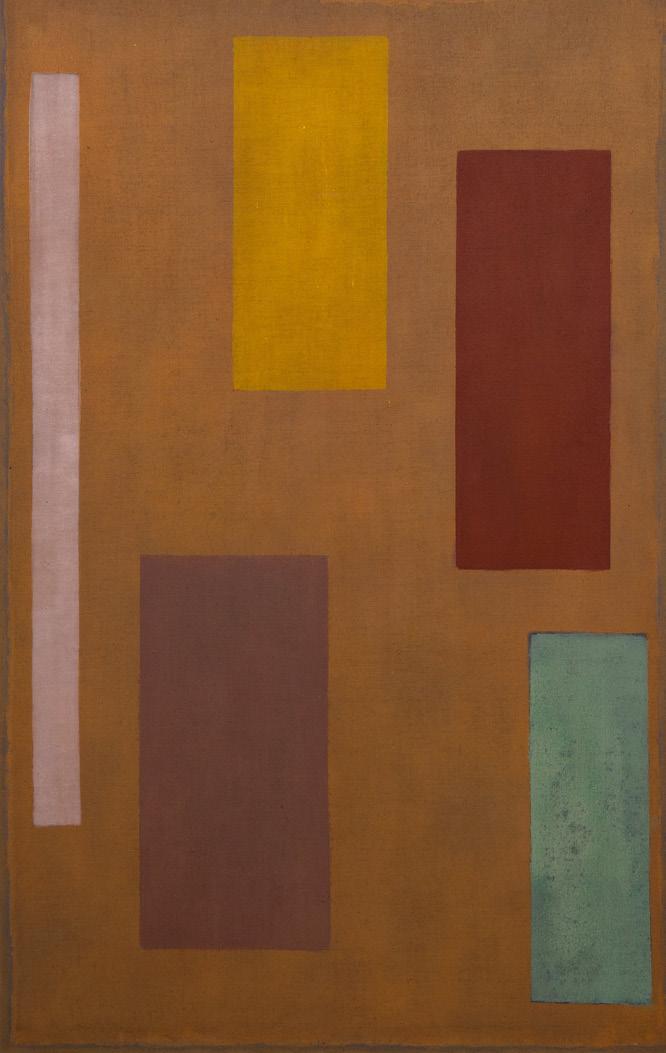
Sydney Ball, Sparta: Link series, 1970-71, acrylic on linen, 229 x 145 cm

Sydney Ball, Sketchbook, 1970, Link Series
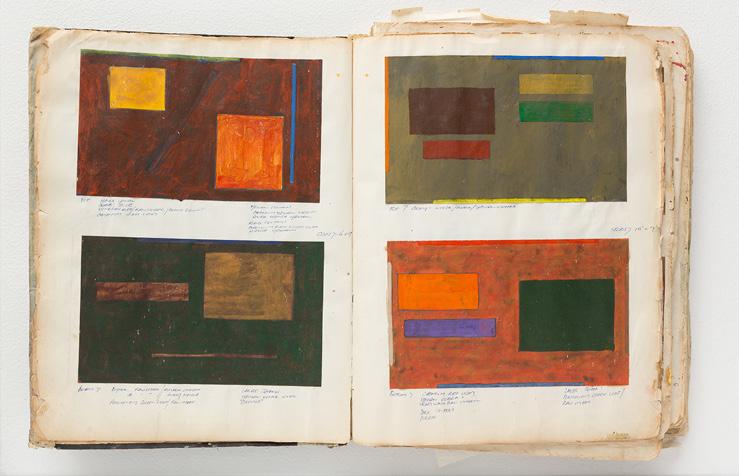
Sydney Ball, Sketchbook, 1970, Link Series
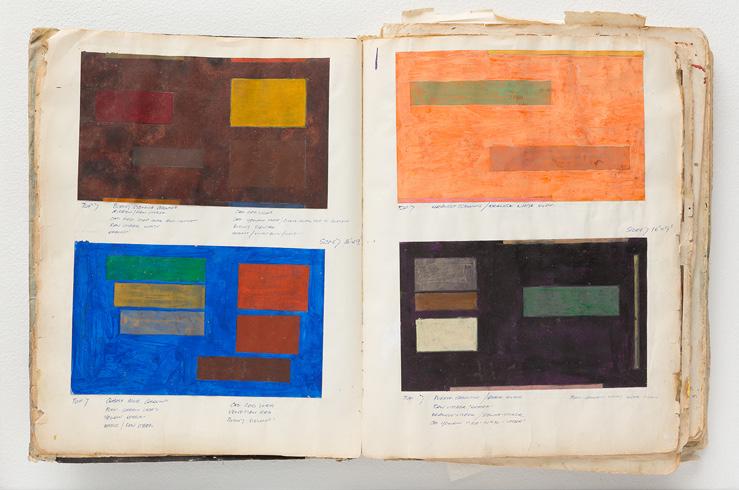
Sydney Ball, Sketchbook, 1970, Link Series
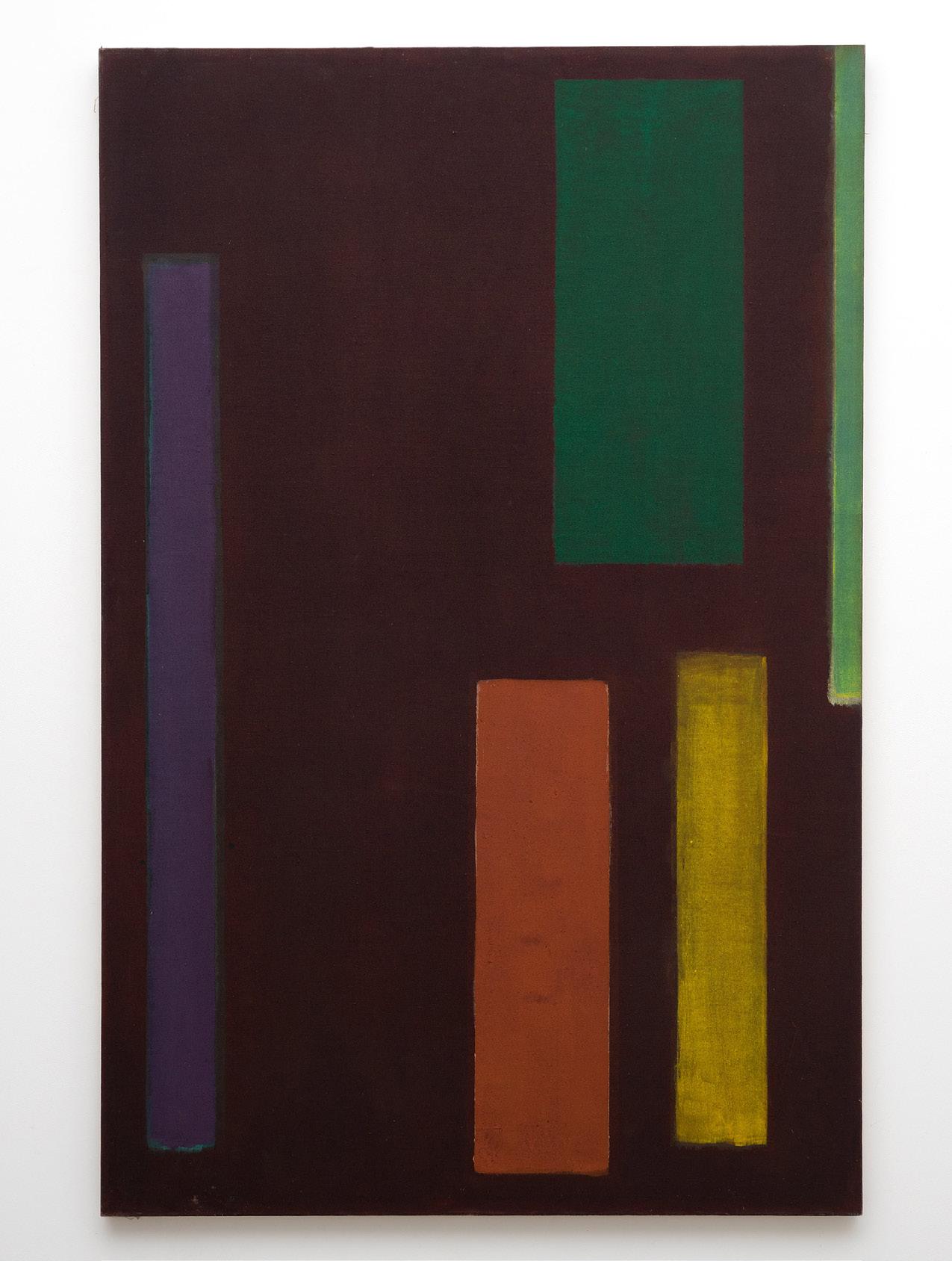
Sydney Ball, Levant: Link Series, 1970, acrylic onlinen, 229 x 145 cm
1. Laurie Thomas, The most noble art of them all, St. Lucia, Qld: University of Queensland Press, 1976, p. 217
2. Other members of the Irascibles, who in 1950 challenged the exhibiting policies of the Metropolitan Museum of Art, included Louise Bourgeois, Adolph Gottlieb, Willem de Kooning, Robert Motherwell, Barnett Newman, Kenneth Noland, Jackson Pollock, Ad Reinhardt, Mark Rothko, Clyfford Still.
3. Thomas, op. cit., p. 217
4. Elwyn Lynn, ‘Leadership Challenged by the Best Show for Years’, The Bulletin, 1969, p. 56. Lynn was an important supporter and friend throughout Ball’s career.
5. Christopher Heathcote, A Quiet Revolution: the rise of Australian art 1946–1968, Melb: The Text Publishing Company, 1995, pp. 188, 189. In 2002, John Stringer, co-curator of The Field (1968) referred to Ball as a ‘prophet at home generating large canvases … that seemed to have no precedent in Australian culture.’
6. ‘Khamsa’ was also exhibited in 1967 at Sweeney Reed’s Strines Gallery in Melbourne and in 1969 at Perth’s John Gild Galleries and Bonython Art Gallery in Adelaide. It was later included in a 2003 survey exhibition of Australian mid-century sculpture at Melbourne’s Heide Museum of Modern Art.
7. Karen Wilkin, Color as Field: American Painting 1950–1975, Washington DC: Smithsonian Art Museum, 2008, p. 73
8. Bruce James, ‘Three Generations, One with Youth on its Side’, Sydney Morning Herald, 23 April, 2003, p.16
9. Stephanie Britton, ‘Far from gloomy’, The News, Adelaide, 23 October, 1971
10. Anne Loxley, interview with the artist, 28 July, 2008 in Sydney Ball: The colour paintings 1963–2007, Penrith Regional Gallery & The Lewers Bequest, 2008, p. 14
11. Michael McNay, ‘Helen Frankenthaler Obituary’, The Guardian, 29 December, 2011
All unattributed quotes by Sydney Ball are from interviews and email communications with the author, 2007–2013.










